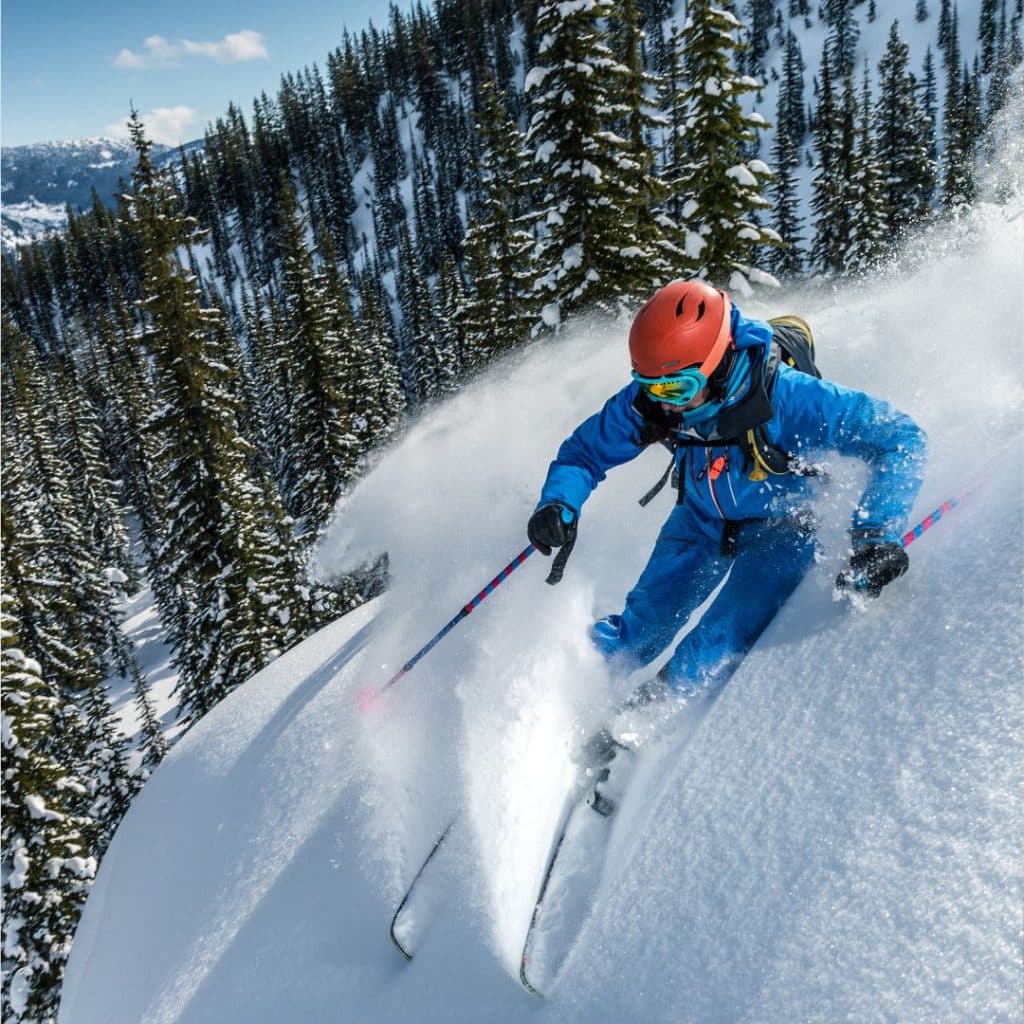For many, the winter season is synonymous with the thrill of skiing. The crisp mountain air, the breathtaking views, and the exhilarating feeling of gliding down a snowy slope are hard to resist. However, for those dealing with chronic knee pain, the prospect of skiing can be daunting.
This brings us to Laura, a former distance runner who, at age 42, was diagnosed with grade 4 chondromalacia patella and told a total knee replacement was in her future, but she had to get to 50. She hung up her running shoes and started swimming regularly as her new chosen form of exercise, but was bound and determined to keep skiing, a weekly family hobby.
Chondromalacia, also known as “runner’s knee,” is a condition that causes a breakdown of cartilage under the knee cap (patella). For Laura, the pain was excruciating, and she experienced significant instability, especially when going downhill or using stairs. This instability was particularly problematic when skiing, as each turn was a test of pain, endurance, and control. For days after skiing, Laura experienced swollen, painful knees and difficulty walking. No matter how minor, it seemed like every movement aggravated the injury. Yet, with unwavering determination, Laura sought help from physical therapy.
A Physical Therapist’s Perspective on Knee Pain and Skiing
Dr. Chris McKenzie, a seasoned physical therapist and expert at treating many of the injuries that athletes experience, shares his insights on addressing chronic knee pain:
“When someone has chronic knee pain, it was previously believed that the cause was unstable tracking of the patella on the femur, requiring strengthening of the vastus medialis oblique (VMO), a muscle in the quadriceps responsible for knee stability. More recent findings have shown that weak hips more commonly cause knee pain and abnormal tracking of the femur under the patella.”
Chronic knee pain can significantly impact one’s quality of life, especially for avid skiers. The key to managing such pain at McKenzie Sports Physical Therapy is a multi-faceted approach that includes:
- Physical Therapy: A well-structured physical therapy program can help strengthen areas of weakness, including the hips and VMO, and improve flexibility and neuromuscular control. Exercises like leg raises, clamshells, quadriceps and hamstring strengthening, balance training, and specific knee stabilization exercises can be highly beneficial.
- Bracing and Taping: Sometimes, using a knee brace or applying kinesiology tape can provide additional support and pain relief.
- Orthotics: For some people, custom orthotic inserts to lift the arches help alleviate knee pain.
- Medication: Over-the-counter pain relievers like ibuprofen or acetaminophen can help manage pain and inflammation. Nonsteroidal anti-inflammatories like Celebrex may also be prescribed depending on the severity of knee pain. It’s essential to consult with a healthcare professional before starting any medication.
- Injections: Corticosteroid injections can effectively reduce inflammation and pain but should be used judiciously. Gel injections, such as Synvisc One, can also temporarily relieve bone-on-bone joint pain as the gel provides cushioning, similar to cartilage.
- Lifestyle Modifications: Activities that put excessive stress on the knees, such as running on hard surfaces or squatting heavily, should be avoided or modified. Sticking to groomed trails when skiing is also recommended, as deep snow can increase instability and pain in the knee.
“By combining these approaches, many individuals with knee pain can significantly reduce their symptoms and enjoy their favorite activities, including skiing,” said Dr. McKenzie.
Laura’s Journey to the Slopes
Laura embarked on an intensive physical therapy program with Dr. McKenzie’s guidance. Dr. McKenzie focused on strengthening muscle weakness, improving her balance and gait, and improving her skiing technique and body positioning. Slowly but surely, Laura’s knee pain began to subside. She still noticed the pain, but it was manageable, and she felt more in control.
Tips for Skiing with Knee Pain
- Choose the Right Terrain: Opt for gentle slopes and avoid moguls and deep, heavy snow, which can put excessive stress on the knees.
- Warm Up Properly: Warm up with light cardio exercises and dynamic stretches before hitting the slopes.
- Use the Right Equipment: Invest in high-quality ski boots and bindings that provide adequate support and comfort. Consider orthotics for ski boots to provide added arch support.
- Maintain Good Posture: Keep your back straight and your knees slightly bent to absorb shock and reduce stress on the joints.
- Listen to Your Body: If you experience increased pain, take a break or consider ending your skiing session early. Rest, ice, compression, and elevation (RICE) will help decrease swelling and increase comfort after a day on the slopes.
If you have chronic knee pain, it is important to know that there are nonsurgical options to help you feel better. Partner with an experienced physical therapist that you connect with to help address areas of weakness and instability that are causing your knee pain. Commit to a physical therapy plan and be vigilant about doing any prescribed exercises.
By following these tips, people with knee pain can enjoy the winter season without compromising their health. Patience and persistence are key to overcoming chronic pain and achieving your goals.


